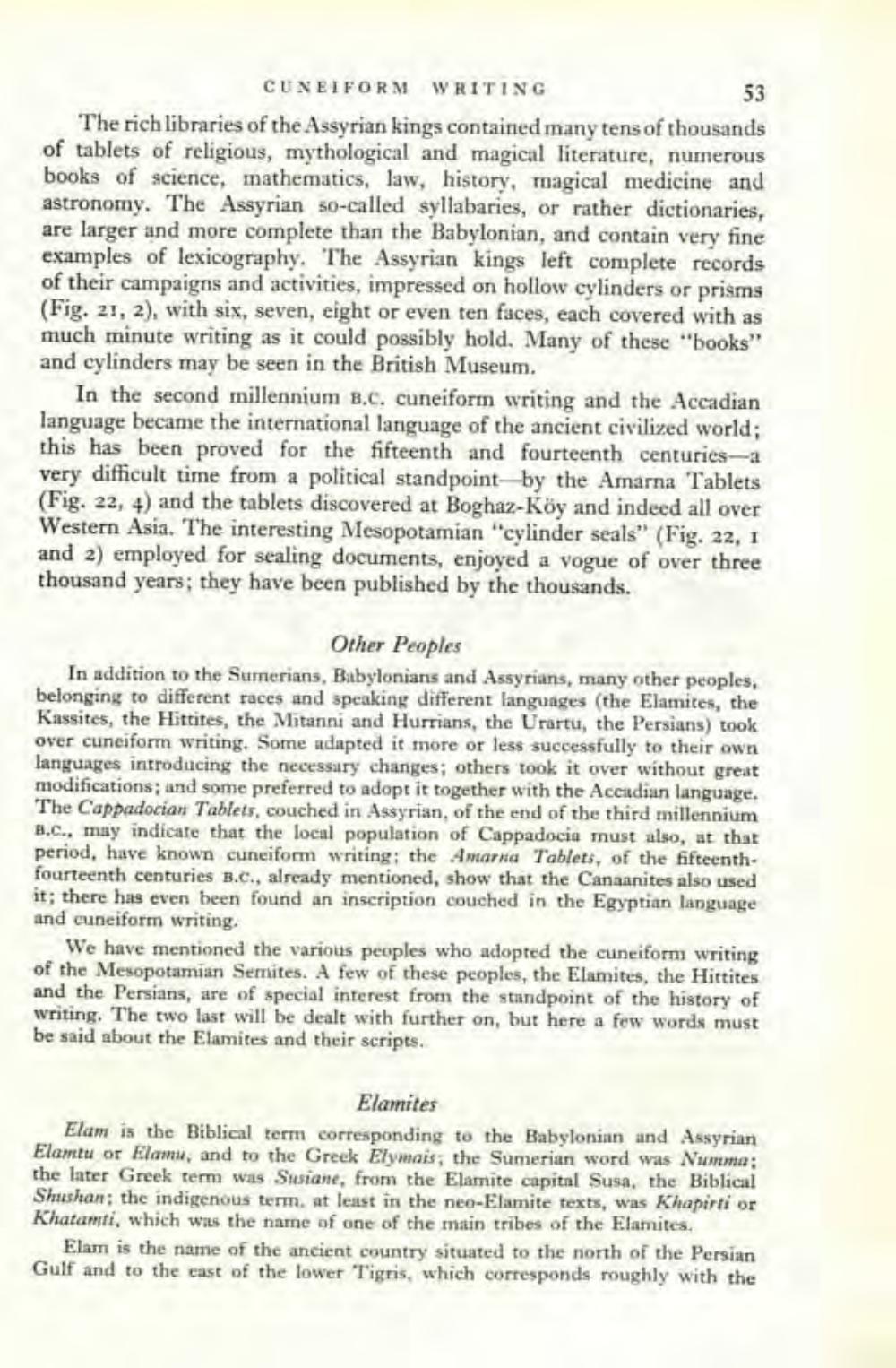________________
CUNEIFORM WRITING
53 The rich libraries of the Assyrian kings contained many tens of thousands of tablets of religious, mythological and magical literature, numerous books of science, mathematics, law, history, magical medicine and astronomy. The Assyrian so-called syllabaries, or rather dictionaries, are larger and more complete than the Babylonian, and contain very fine examples of lexicography, The Assyrian kings left complete records of their campaigns and activities, impressed on hollow cylinders or prisms (Fig. 21, 2), with six, seven, eight or even ten faces, each covered with as much minute writing as it could possibly hold. Many of these books" and cylinders may be seen in the British Museum.
In the second millennium B.C. cuneiform writing and the Accadian language became the international language of the ancient civilized world; this has been proved for the fifteenth and fourteenth centuries-a very difficult time from a political standpoint by the Amarna Tablets (Fig. 22, 4) and the tablets discovered at Boghaz-Köy and indeed all over Western Asia. The interesting Mesopotamian "cylinder seals" (Fig. 22, I and 2) employed for sealing documents, enjoyed a vogue of over three thousand years; they have been published by the thousands.
Other Peoples In addition to the Sumerians, Babylonians and Assyrians, many other peoples, belonging to different races and speaking different languages (the Elamites, the Kassites, the Hittites, the Mitanni and Hurrians, the Urartu, the Persians) took over cuneiform writing. Some adapted it more or less successfully to their own languages introducing the necessary changes; others took it over without great modifications, and some preferred to adopt it together with the Accadian language.
The Cappadocian Tablets, couched in Assyrian, of the end of the third millennium B.C., may indicate that the local population of Cappadocia must also, at that period, have known cuneiform writing: the Amarna Tablets, of the fifteenthfourteenth centuries B.C., already mentioned, show that the Canaanites also used it; there has even been found an inscription couched in the Egyptian language and cuneiform writing.
We have mentioned the various peoples who adopted the cuneiform writing of the Mesopotamian Semites. A few of these peoples, the Elamites, the Hittites and the Persians, are of special interest from the standpoint of the history of writing. The two last will be dealt with further on, but here a few words must be said about the Elamites and their scripts.
Elamites Elam is the Biblical term corresponding to the Babylonian and Assyrian Elamu or Elamu, and to the Greek Elymais; the Sumerian word was Numma; the later Greek term was Susiane, from the Elamite capital Susa, the Biblical Shushan: the indigenous term, at least in the neo-Elamite texts, was Khapirti or Khatanti, which was the name of one of the main tribes of the Elamites.
Elam is the name of the ancient country situated to the north of the Persian Gulf and to the cast of the lower Tigris, which corresponds roughly with the




